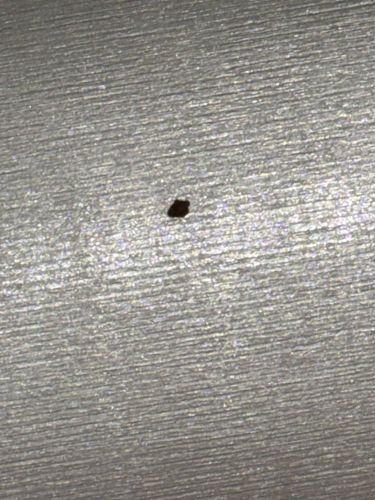Flea
Scientific Name: Ctenocephalides felis (common cat flea, also frequently found on dogs) or Ctenocephalides canis (dog flea), Pulex irritans (human flea) - precise species is difficult to determine from image alone, but morphology is consistent with a flea.
Order & Family: Order: Siphonaptera, Family: Pulicidae (Cat flea, Dog flea, Human flea are common examples within this family)
Size: Typically 1.5 mm to 4 mm (0.06 to 0.16 inches) in length.

Natural Habitat
Fleas are found worldwide, primarily inhabiting the fur or feathers of various warm-blooded animals, including mammals and birds. They are commonly found in homes, especially those with pets, where they reside in carpets, upholstery, bedding, and cracks in floors. Outdoor habitats include grassy and sandy areas, and shaded spots where host animals rest.
Diet & Feeding
Fleas are obligate hematophagous parasites, meaning they feed exclusively on the blood of their hosts. Adult fleas typically feed multiple times a day.
Behavior Patterns
Fleas are famous for their jumping ability, using their powerful legs to launch themselves distances up to 100 times their body length. They are parasitic and spend much of their lives on a host, feeding on blood. They can reproduce rapidly, with females laying many eggs daily, especially in the optimal temperature and humidity conditions found indoors. Their life cycle includes egg, larva, pupa, and adult stages, with the pupal stage being very resilient and able to delay emergence until a host is detected through vibrations or CO2.
Risks & Benefits
Potential risks include causing itchy bites, leading to skin irritation, allergic reactions (flea allergy dermatitis), and secondary bacterial infections from scratching. Fleas can also transmit various diseases to humans and animals, such as murine typhus (via Rickettsia typhi) and tapeworm (Dipylidium caninum). For pets, heavy infestations can lead to anemia. They provide no direct benefits to humans or the ecosystem, other than serving as a food source for some predators and representing a very small part of the complex food web.
Identified on: 9/2/2025